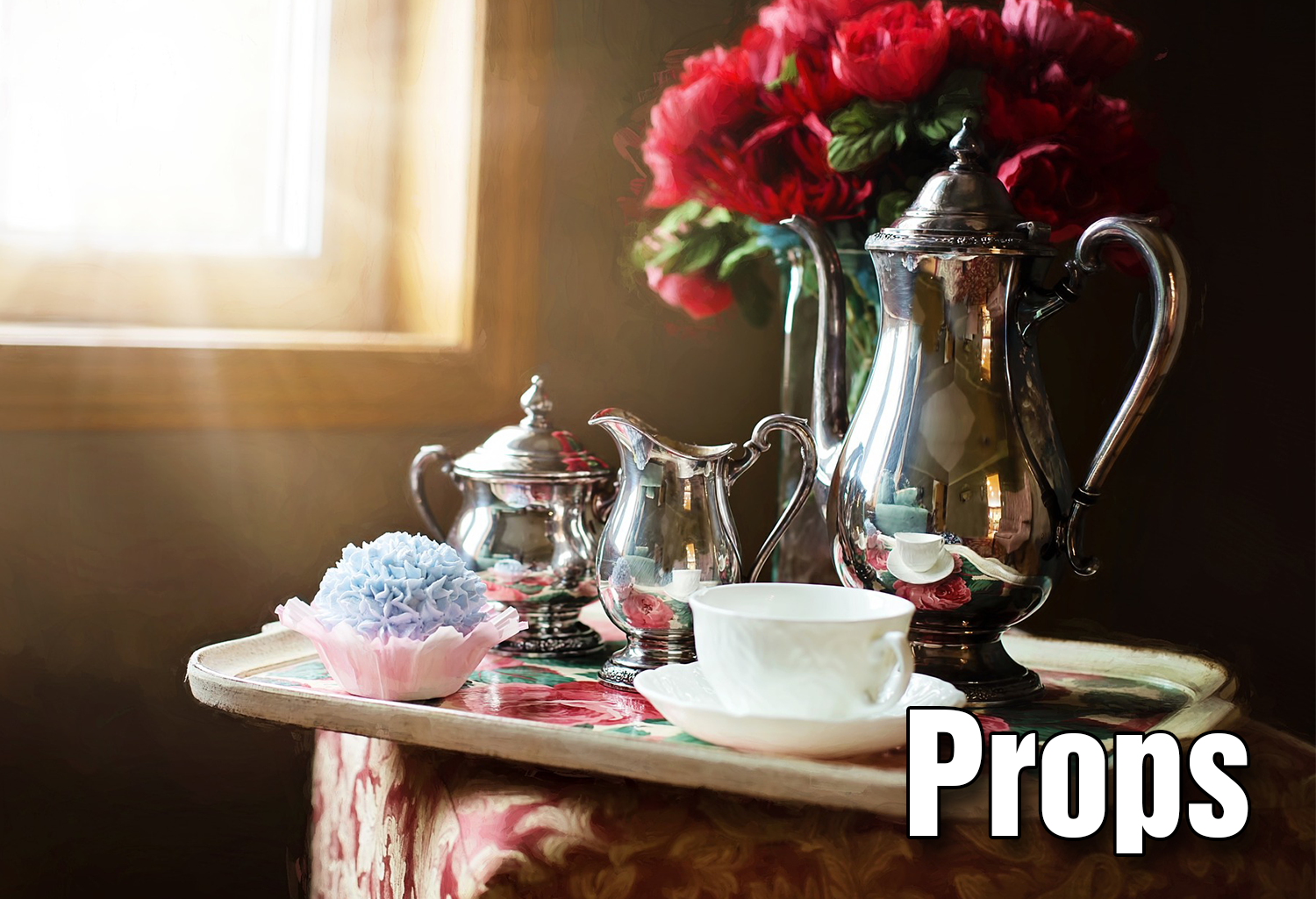
Students will identify categories of props and which people create or obtain props. They’ll analyze a script for needed props, use critical-thinking skills to problem solve prop issues, and create a prop.
Standards Addressed
National Core Arts Standards
Generate and conceptualize artistic ideas and work - Grade 6
TH:Cr1.1.6.b - Identify solutions to design challenges in a drama/theatre work.
Generate and conceptualize artistic ideas and work - Grade 7
TH:Cr1.1.7.b - Explain and present solutions to design challenges in a drama/ theatre work.
Develop and refine artistic techniques and work for presentation - Grade 6
TH:Pr5.1.6.b - Articulate how technical elements are integrated into a drama/ theatre work.
California VAPA Standards (2019)
6.TH:Cr1 Generate and conceptualize artistic ideas and work
6.TH:Cr1.c - Identify solutions to design challenges in a drama/theatre work.
7.TH:Cr1 Generate and conceptualize artistic ideas and work
7.TH:Cr1.c - Explain and present solutions to design challenges in a drama/ theatre work.
6.TH:Pr5 Develop and refine artistic techniques and work for presentation.
6.TH:Pr5.b - Articulate how technical theatre elements are integrated into a drama/ theatre work.
Colorado Academic Standards - Drama and Theatre Arts
Common Core
Language
Florida Sunshine State Standards
Critical Thinking & Reflection
Innovation, Technology & the Future
Skills, Techniques & Processes
TH.912.S.2.1 - Create one or more technical design documents for a theatrical production.
Georgia Performance Standards - Theatre Arts
Grade 8 - Performing
Grades 9-12 - FUNDAMENTALS OF THEATRE LEVELS I-IV - Connecting
North Carolina Essential Standards 2024
Beginning High School Create
Beginning High School Present
B.PR.2.3 - Implement technical elements to support scripted or devised presentations.
North Carolina Essential Standards 2010
Beginning High School Standards - Aesthetics
Texas Essential Knowledge and Skills for Theatre Arts
MS 117.212 LII - Creative Expression: production
MS 117.213 LIII - Creative Expression: production
HS 117.315 LI - Creative Expression: production
HS 117.316 LII - Creative Expression: production
C.3.A - develop and practice safe and effective stagecraft skills.
HS 117.318 LIV - Creative Expression: production
Alberta, Canada
Technical Theatre/Design 10-20-30 - Management - Properties
1 - demonstrate understanding of the purpose of stage properties
2 - recognize the importance of illusion in properties design
3 - recognize the importance of artistic unity in properties design
4 - demonstrate knowledge if appropriate safety procedures
5 - recognize different types of properties: set properties, hand properties, rehearsal properties
7 - develop a properties list for a specific script
8 - recognize the need for developing and maintaining properties inventories
Junior Orientation
demonstrate a willingness to take calculated and reasonable risks
focus concentration on one task at a time
generate imaginative and creative solutions to problems
meet deadlines and follow through on individual and group commitments
share ideas confidently with others
understand that technical elements enhance verbal/physical communication
Junior Goal I Objectives
develop a sense of responsibility and commitment
develop the ability to initiate, organize and present a project within a given set of guidelines
develop the willingness to make a decision, act upon it and accept the results
Technical Theatre - Levels I, II, III - Awareness
1 - recognize the basic terminology associated with the component being studied
2 - demonstrate understanding of the basic functions of the component being studied.
3 - show awareness of the importance of research
5 - demonstrate understanding of the various conventions of the components being studied
Technical Theatre - Levels I, II, III - Readiness
6 - demonstrate understanding of the importance of planning and organization
Senior Goal I Objectives
British Columbia (2018)
GRADE 6 - ARTS - Reasoning and reflecting
GRADE 7 - ARTS - Reasoning and reflecting
GRADE 8 - ARTS - Reasoning and reflecting
GRADE 10 - DRAMA - Explore and Create
Experiment with a range of props, processes, and technologies
Ontario, Canada
Grades 9 & 10 - Foundations - Responsible Practices
Grades 9 & 10 - Foundations - Concepts and Terminology
Virginia Standards Of Learning (2020)
Get instant access to this and everything else in the Drama Teacher Academy